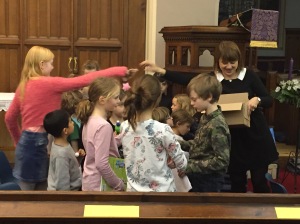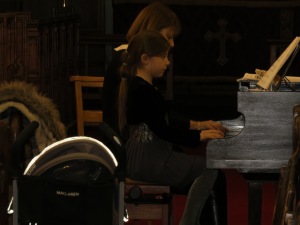I am very pleased to present this guest post from Oregon-based teacher Doug Hanvey. Contrasting the UK and US approach to learning the piano, Doug has written a really interesting post about the importance of creativity in piano lessons and how this is not always compatible with an approach that solely focuses on formal exams.
I’m delighted to write this guest post for Rebecca sharing an American perspective on the graded exam approach to piano teaching and alternatives to it.
As is easily observable from my website and blog, I take a highly-creative approach to teaching piano. Even in the U.S. – which from Rebecca’s posts contrasting the British exam process to ours may appear to offer a slower-paced, more creative approach to piano teaching – I am definitely an outlier among my colleagues.
Perhaps the closest thing to the British exam process in Oregon, where I teach, is the 10-level “Syllabus” program that covers technique, music theory, sight reading, rhythm reading, and repertoire. The Syllabus program is offered by the Oregon Music Teachers Association, a division of the Music Teachers National Association. (I am a member of both organizations.) The program includes the usual adjudications (our euphemism for “exams”) to measure students’ progress.
While the main Syllabus program does not incorporate creative activities such as improvisation, we are fortunate to also have a special Jazz Syllabus that does include improvisation.
At this point, I don’t use make use of either Syllabus program, though if I did, I would probably use the Jazz Syllabus, if only for its creative requirements. Like Rebecca, I believe that teaching students with an emphasis on passing formal examinations, while certainly valuable in its own way, can also feel restricted and lacking in creativity. I strongly believe in the value of teaching musically creative activities such as arranging, composition and improvisation. Now it’s true that the more time given to these skills, the less time there may be for developing high-level performance skills. Still, at least for most of my students, I believe it’s well worth it. There is, after all, a glut of virtuosic pianists in the world today. For that matter, the average piano student is not going to aim for, let alone attain, a virtuosic level. Why not offer such students a broader musical education that allows them to express themselves creatively in more ways than just learning to interpret others’ music, stimulating their enjoyment of piano lessons as high as it can go?
Like Rebecca, as a child I was never formally taught to improvise or compose. Instead, I taught myself until I received formal training later. As a teen, I even stopped taking piano lessons for a few years because I wasn’t enjoying the emphasis on the performance of classical repertoire. If someone had asked me if I wanted to study with a piano teacher who would also teach me how to compose or improvise, I would have been thrilled. In fact, when I was about 16 I took matters into my own hands by seeking out and studying composition with a doctoral student at the Indiana University School of Music.
Like Rebecca, I now teach my students the way I wanted to be taught. My students can learn to play by ear, to improvise, to compose, and to arrange – creative activities that stimulate musical engagement and provide additional options for personal musical expression. (This isn’t to say I have anything against the classical canon, which I also deeply enjoy playing and teaching.)
As the majority of my students are adults, I don’t have to decide about using the graded Syllabus program. Few, if any, of my students would be interested. Instead, with beginners I most often use a standard method such as Faber or Alfred along with materials I’ve personally developed.
To keep things interesting and creative for both myself and my students, sometimes I’ll take a piece in the method book and have a student compose an original arrangement of it (a procedure I’ll be explaining to interested teachers on my blog later this month), or use it as a launching point for improvisation.
Like any teacher, I want to develop good players. More important for me is developing good players who also have a broad set of creative musical skills. But most important to me is that my students become musicians who love music so much that they play piano and are creative with music for the rest of their lives.
Doug Hanvey is a piano teacher in Portland, Oregon.










